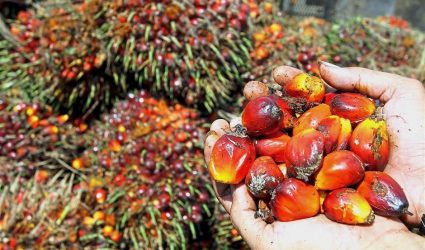Demand for palm oil to surge as importing countries restock

(NST) – Market observers are upbeat about demand for Malaysia’s palm oil from India and China due to current low stocks there and attractive crude palm oil price discount against other edible oils.
The gradual reopening of the Indian and European economies also would likely lead to a surge in demand and replenish inventories on ghe event of a second wave of the Covid-19 pandemic.
The optimism was concluded at a webinar conference by the Malaysian Palm Oil Council yesterday to discuss palm oil in the post pandemic market.
Over 600 participants joined the session which hosted three panelists: Indian Vegetable Oil Producers Association (IVPA) president Sudhakar Desai, Kuala Lumpur Kepong Bhd business director Ooi Liang Hin and Lipidos Santiga sales director Jose Angel.
It was moderated by MPOC chief executive officer Datuk Dr. Kalyana Sundram.
Desai said India’s palm oil inventories were low at 0.58 million tonnes, while Ooi shared that China’s stockpile stood at 0.5 million tonnes.
They said CPO price discount against its key rival, soybean oil, had widened in recent months to US$142 per tonne, making palm oil more attractive.
Desai expects India’s palm oil imports to rise to 800,000 tonnes per month in July till September 2020 from 400,000 tonnes per month in the April-May period.
However, he said India’s overall palm oil imports were expected to fall by 23 per cent to 7.75 million tonnes in October to September 20.
Desai revealed that the Indian government was keen to grow its edible oils supply by 55 per cent to 11.62 million tonnes in 2025.
This would raise its self-sufficiency to 60 per cent from 35 per cent currently.
“However, to achieve this, oilseed farmers will need support from the government and hence there are discussions for India to consider imposing duties on edible oils by 5.0 per cent.”
Desai said between 60 per cent and 65 per cent of palm oil demand in India was used in the hotel, restaurant and café (HORECA) sector and only 35 per cent went to the household sector.
“As a result, palm oil demand was significantly impacted during the lockdown period from April to May in India,” he said, while estimating that this could cut palm oil demand by 2.0 million tonnes in 2020.
The upside for palm oil was that about 80 per cent of stores in India have reopened.
Meanwhile, Jose was concerned about demand for palm oil for food purposes than biodiesel usage in the European market as celebrations had been curtailed by Covid-19.
Ooi shared his prediction that Chinese demand for palm oil would remain healthy at around 590,000 tonnes per month in the second-half of this year compared to 402,000 tonnes per month in the first-half of 2020.
He pointed out that the overall Chinese palm oil imports for 2020 would possibly fall 21 per cent to 5.95 million tonnes.
CGS CIMB Research’s Ivy NG Lee Fang and Nagulan Ravi believe a shift in Malaysia’s palm oil export sales to India (preference for CPO over refined oil) from China as Malaysian refiners were less competitive following the move to suspend CPO export duty for the rest of the year.
“The CPO price is likely to be supported on the back of optimism on stronger sales of palm oil to India in the coming months. However, the boost in demand may be short-lived if there is a second wave of Covid-19,” they said in a research report today.
CGS-CIMB noted that palm oil price upside might be capped by the current low crude oil, as the widening price gap could put the execution of Indonesia B30 mandate at risk.
The firm acautioned that foreign plantation workers in Malaysia could head back to their home country when the border reopens could lead to lower-than-expected production.
“If this materialises, it may lead to weaker supply. However, if addressed, we could see CPO output peak in third-quarter and demand normalising, which could lead to weaker CPO price in the fourth quarter of this year,” it added.

